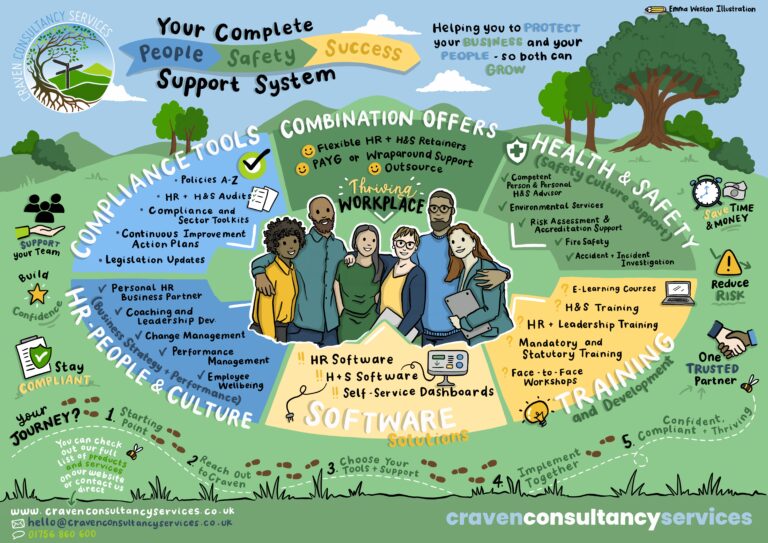Proposed Changes to the Health and Safety at Work Act 1974
In our latest blog, we delve into the recently published draft Bill proposing amendments to the Health and Safety at Work Act. These proposed changes aim to address vital workplace safety concerns, particularly around violence and harassment. However, they also bring new compliance responsibilities for employers, requiring proactive measures to ensure workplace safety and well-being.
What Does the Bill Propose?
The bill introduces a requirement for employers to take proactive steps to prevent violence and harassment in the workplace. It also includes specific protections for women and girls. Additionally, the Health and Safety Executive (HSE) would be tasked with developing a comprehensive Health and Safety Framework on workplace violence and harassment, with a particular focus on violence against women and girls.
Key amendments to Section 2(1) of the HSWA include employers adopting measures to address:
- Gender-based violence.
- Sexual harassment.
- Psychological and emotional abuse.
- Physical and sexual abuse.
- Stalking and harassment (including online).
- Threats of violence.
The draft bill proposing amendments to the Health and Safety at Work etc. Act 1974 was introduced in the House of Commons on 21 October 2024.
The full text of the bill was subsequently published on 27 November 2024.
The second reading is scheduled for 7 March 2025.
If passed, the bill would:
- Require the HSE to develop a detailed framework addressing violence and harassment in workplaces, particularly focusing on gender-based risks.
- Mandate employers to conduct risk assessments to identify and address the likelihood of violence or harassment in their organisations. This includes implementing measures to manage risks like sexual harassment, emotional abuse, and online threats.
- Encourage employers to review and strengthen current reporting systems, training initiatives, and workplace policies to provide better protection for women and girls.
- Promote the establishment of workplace cultures that actively discourage harassment and violence.
The Worker Protection (Amendment of Equality Act 2010) Act 2023, which came into force on October 26, 2024, also requires employers to take reasonable steps to prevent workplace sexual harassment, including harassment by third parties.
Like the proposed bill, this act emphasises the need for proactive measures, such as implementing robust policies, providing training, and ensuring preventative steps are taken to mitigate incidents of harassment.
What Should Employers Do Now?
While the bill is still in draft form and may not yet become law, employers should consider taking steps to align their practices with its intent. This includes:
Steps Employers Should Take
- Review Existing Policies
- Harassment and Bullying Policy: Update your harassment and bullying policies to explicitly include protections against third-party harassment (e.g., from clients, customers, or contractors).
- Equality and Diversity Policy: Ensure that your equality and diversity policy is comprehensive and reflects the latest legal requirements, clearly stating zero tolerance for harassment or discrimination.
- Lone Policy: Update your policy ensuring that employees working alone are protected against harassment or discrimination.
- Develop Clear Reporting Procedures
- Incident Reporting Mechanism: Establish a straightforward process for employees to report incidents of harassment or discrimination. Ensure that employees know how to raise concerns confidentially and safely.
- Investigative Procedures: Outline how reports will be investigated, ensuring prompt, thorough, and impartial handling of complaints.
- Sexual Harassment Training
- Training Programs: Implement training programs for all employees, especially managers, to ensure they understand the new protections under the Act and their responsibilities in creating a respectful workplace.
- Awareness Campaigns: Conduct regular workshops or seminars to raise awareness about harassment and discrimination, emphasizing the importance of a supportive workplace culture.
- Update Employee Handbooks and Contracts
- Policy Inclusion: Include references to the updated harassment and discrimination policies in employee handbooks and contracts to ensure employees are aware of their rights and responsibilities.
- Monitor and Review Workplace Culture
- Regular Surveys: Conduct anonymous employee surveys to gauge the workplace culture and identify any potential issues regarding harassment or discrimination.
- Feedback Mechanism: Encourage open dialogue about workplace culture and provide channels for employees to give feedback without fear of reprisal.
- Provide Support for Affected Employees
- Support Systems: Offer support services, such as counselling or employee assistance programs (EAPs), for employees who experience harassment or discrimination.
- Return-to-Work Plans: Create tailored return-to-work plans for employees who may need accommodations following incidents of harassment or discrimination.
- Communicate Policies and Changes
- Policy Distribution: Distribute updated policies to all employees and ensure they are easily accessible, such as through an intranet or employee handbook.
- Information Sessions: Hold information sessions to explain the changes in legislation and what they mean for employees, reinforcing the organization’s commitment to a safe and respectful workplace.
- Implement Third-Party Conduct Policies
- Customer Interaction Guidelines: Develop clear guidelines for employee interactions with customers, clients, and contractors, outlining expected behaviours and how to report any inappropriate conduct.
- Training for External Parties: Consider training programs for third parties who interact with employees to raise awareness about workplace harassment and discrimination.
We will continue to monitor the progress of this bill and provide updates as more information becomes available.













